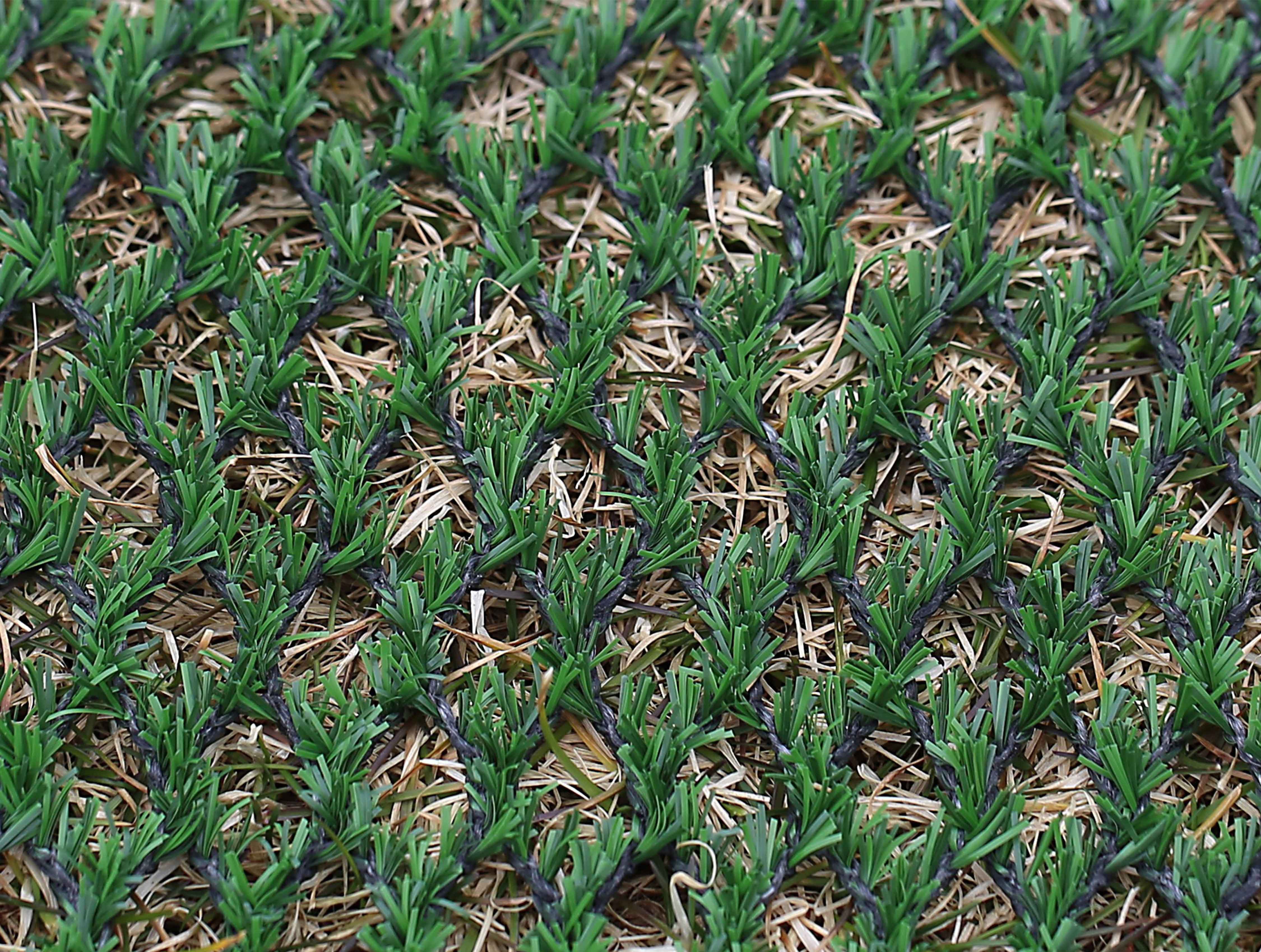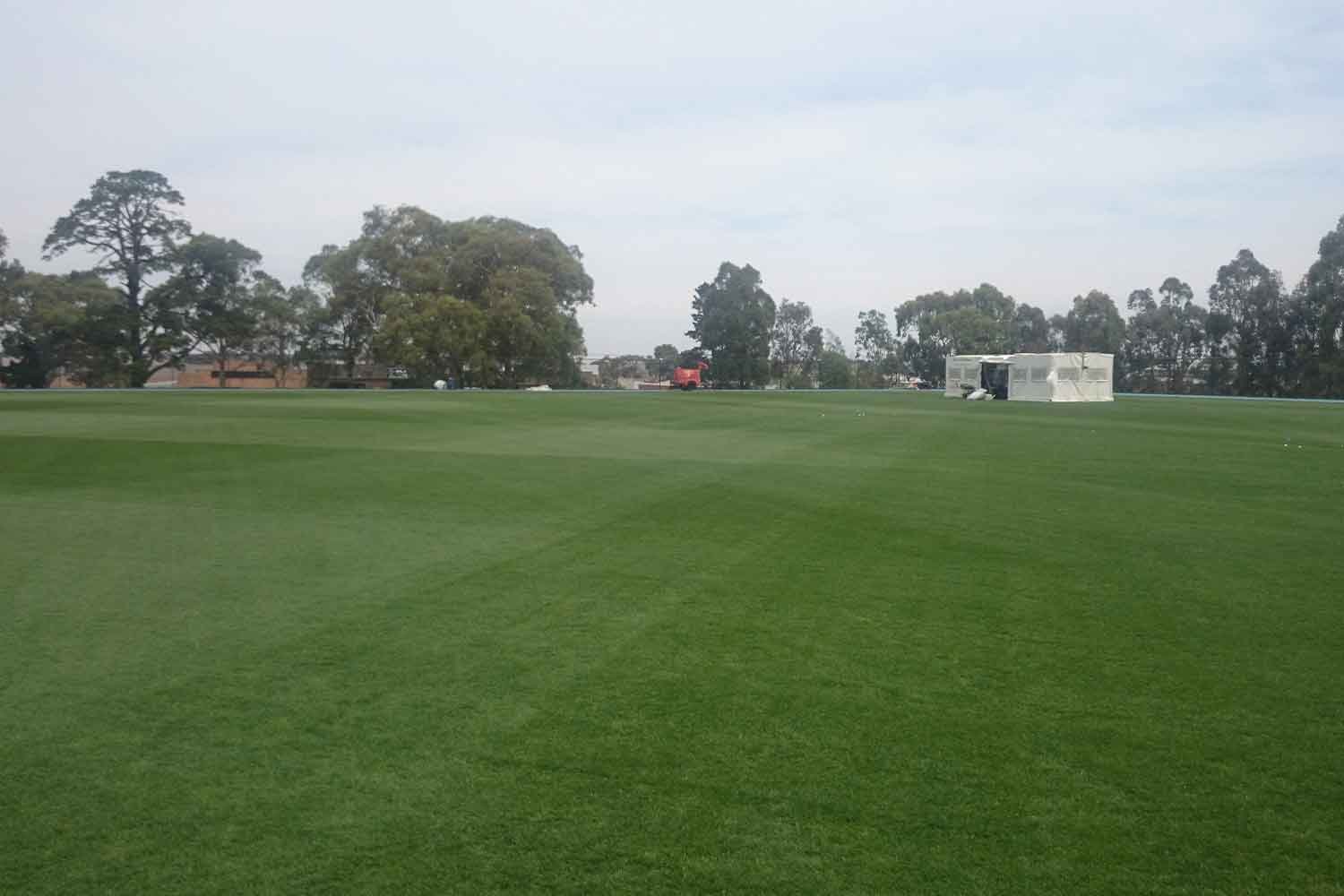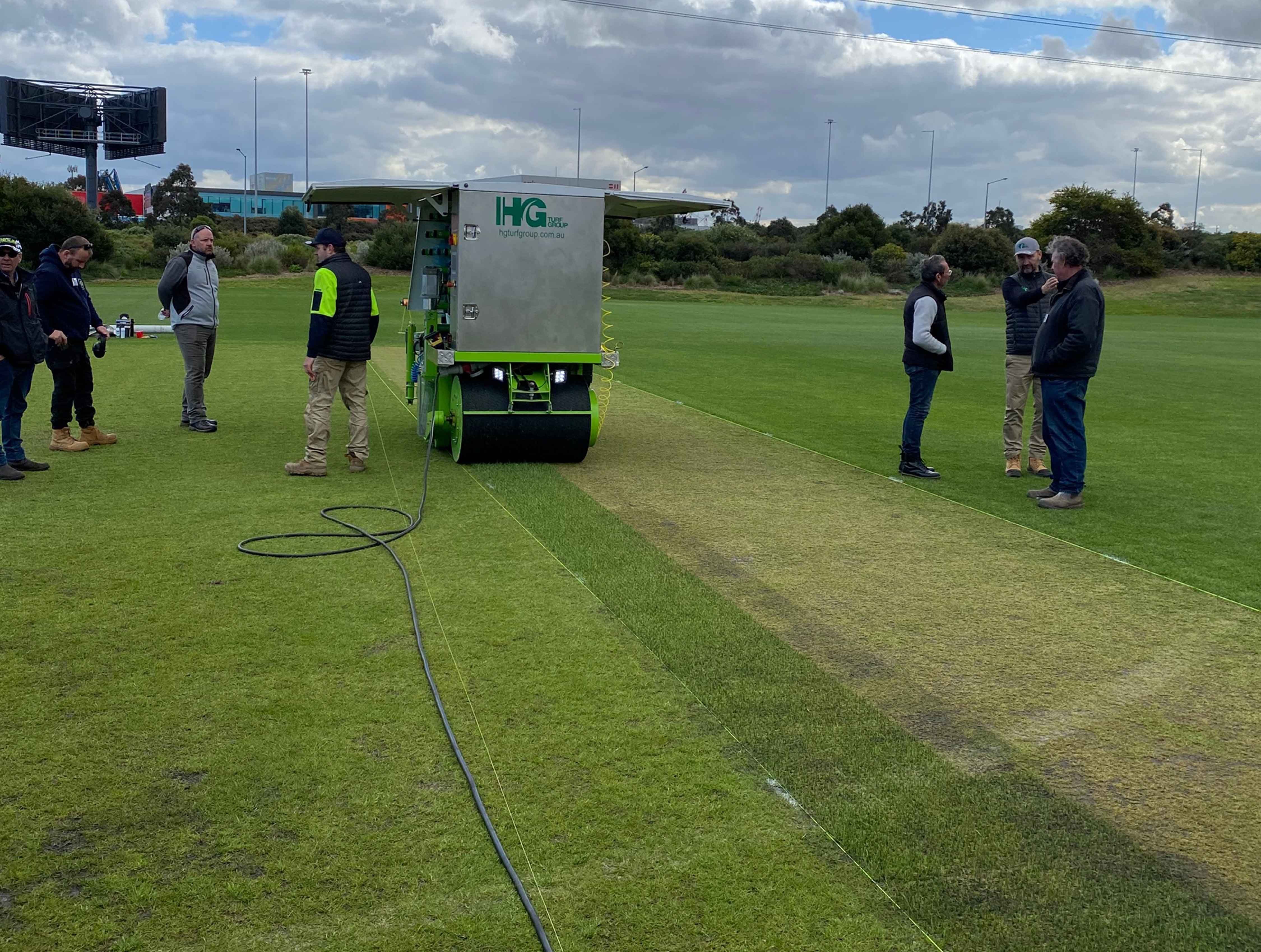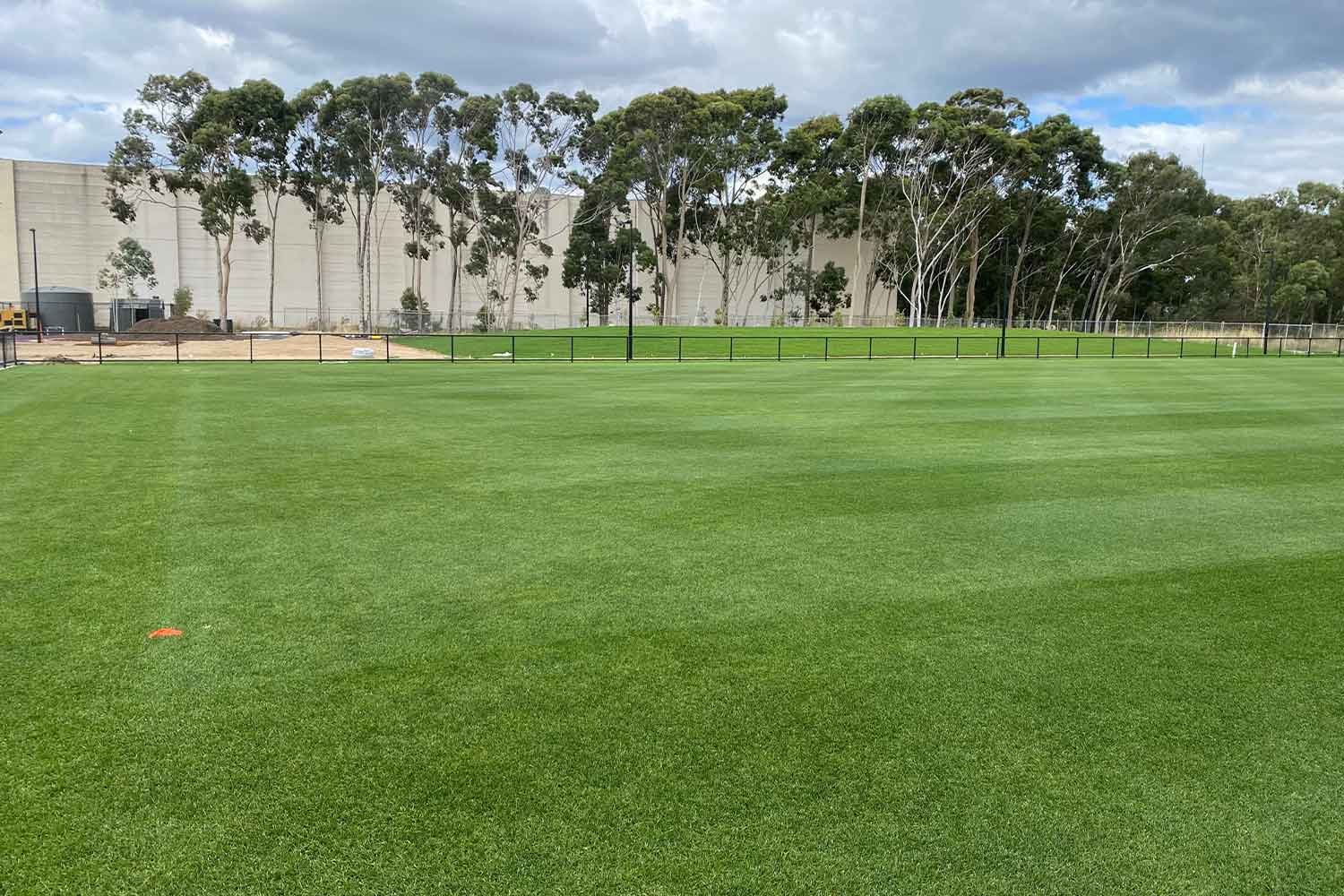

Advancements in technology allows us to artificially improve the performance of a natural turf surface and its profile. This is through the inclusion of proprietary systems and products within the profile itself.
Hybrid and profile reinforcement systems improve the durability of the surface and stability of the profile. Some of these systems enable the off-site production of ‘ready-to-play’ turf, which can be harvested at the farm, transported and installed at the venue, then used within days of installation.
Our definition of both systems are as follows:
It is important to know the difference between a hybrid product and profile reinforcement system. A hybrid grass system and a reinforced profile both improve the stability of a sand profile and can be established as a ‘ready-to-play’ product. However, when the natural turf coverage is worn out due to high wear, only the hybrid turf will provide a green ‘tinge’ across the surface, due to its fibres protruding through the surface. A reinforced profile, however, will not aid with the visual aesthetics.
Here at SPORTENG, our team are well versed with all the hybrid and profile reinforced systems on the market. We can provide you with the information and advice you need to select the appropriate surface for your project.
From planning to design, construction to maintenance, sports surfaces are at the home of athletes across the globe.
Our surface knowledge covers a range of sports and their associated fields of play, from local- and regional-level facilities, to elite national and international stadiums.

If you’re considering if a hybrid turf or reinforced profile is suitable for your project, it is important to understand the limitations with each of the systems. You need to appreciate and assess the advantages and disadvantages of each against the desired outcomes for the project.
When determining if hybrid turf or a reinforced profile is a suitable option for your project, you should consider and account for turf variety, profile, operating conditions and maintenance requirements.

A hybrid grass surface can be installed in two ways:
A profile reinforced system needs to be included into the playing surface profile prior to the natural turf being established.
Confidently select the perfect natural turf profile.




When you’re considering a surface for your facility, ongoing maintenance and its whole-of-life cycle should be a priority.
When a surface is properly maintained and correctly used, your facility will have an optimal lifespan.
The introduction of a proprietary hybrid or profile reinforcement system into a rootzone sand profile will impact some of the typical maintenance practices.
The inclusion of either surface will result in the profile initially being ‘firmer’ underfoot and may require an increase in aeration processes, such as verti-draining, to soften underfoot. This is typically the same for all profile-stabilising products.
There will also be the following limitations depending on the proprietary system. These include:
At the end of the design life, the growing medium cannot be disposed of as a landscape product due to the inclusion of the synthetic system. The excavated growing medium would need to be sieved to remove the proprietary system prior to the growing medium being used for landscape purposes or similar.